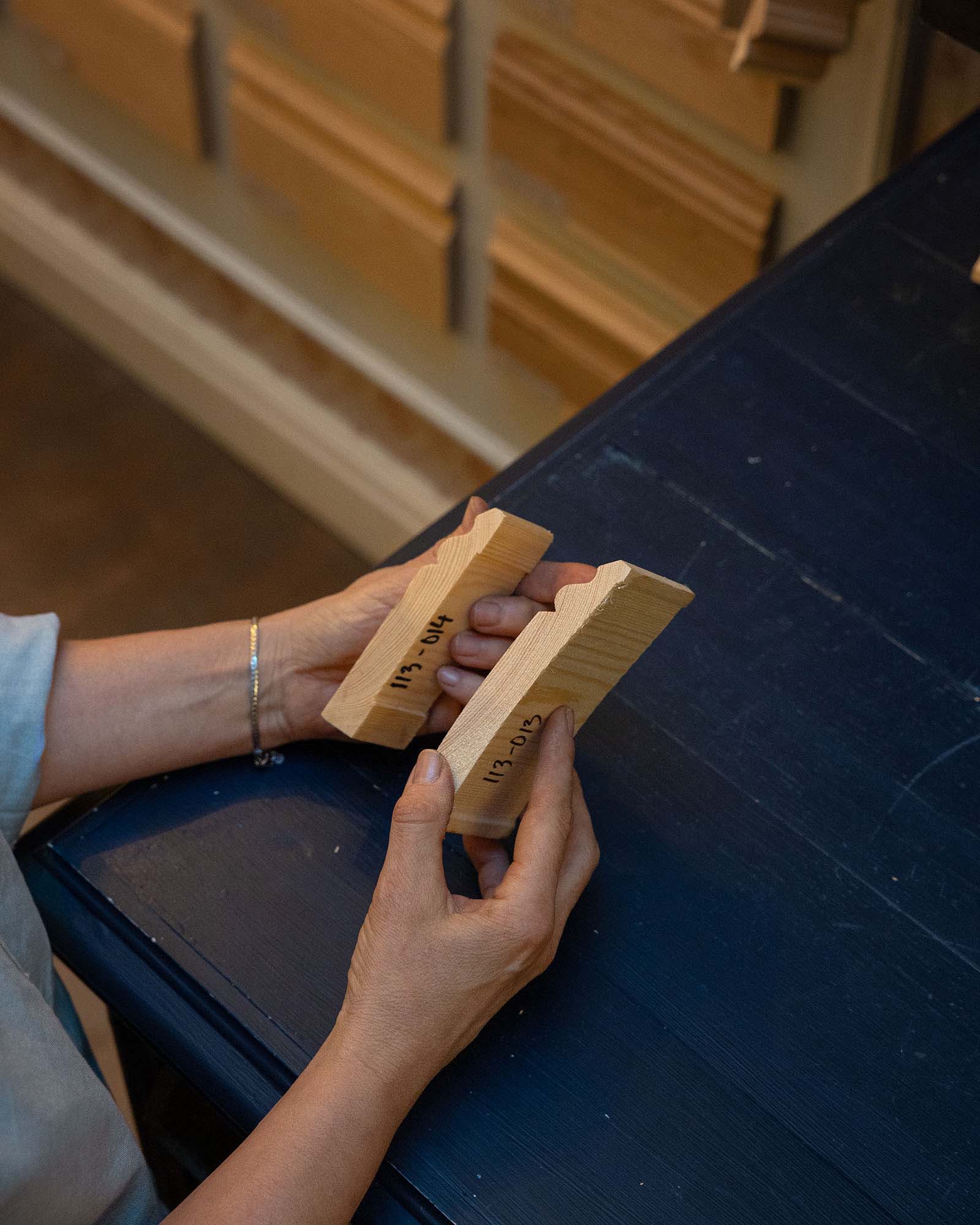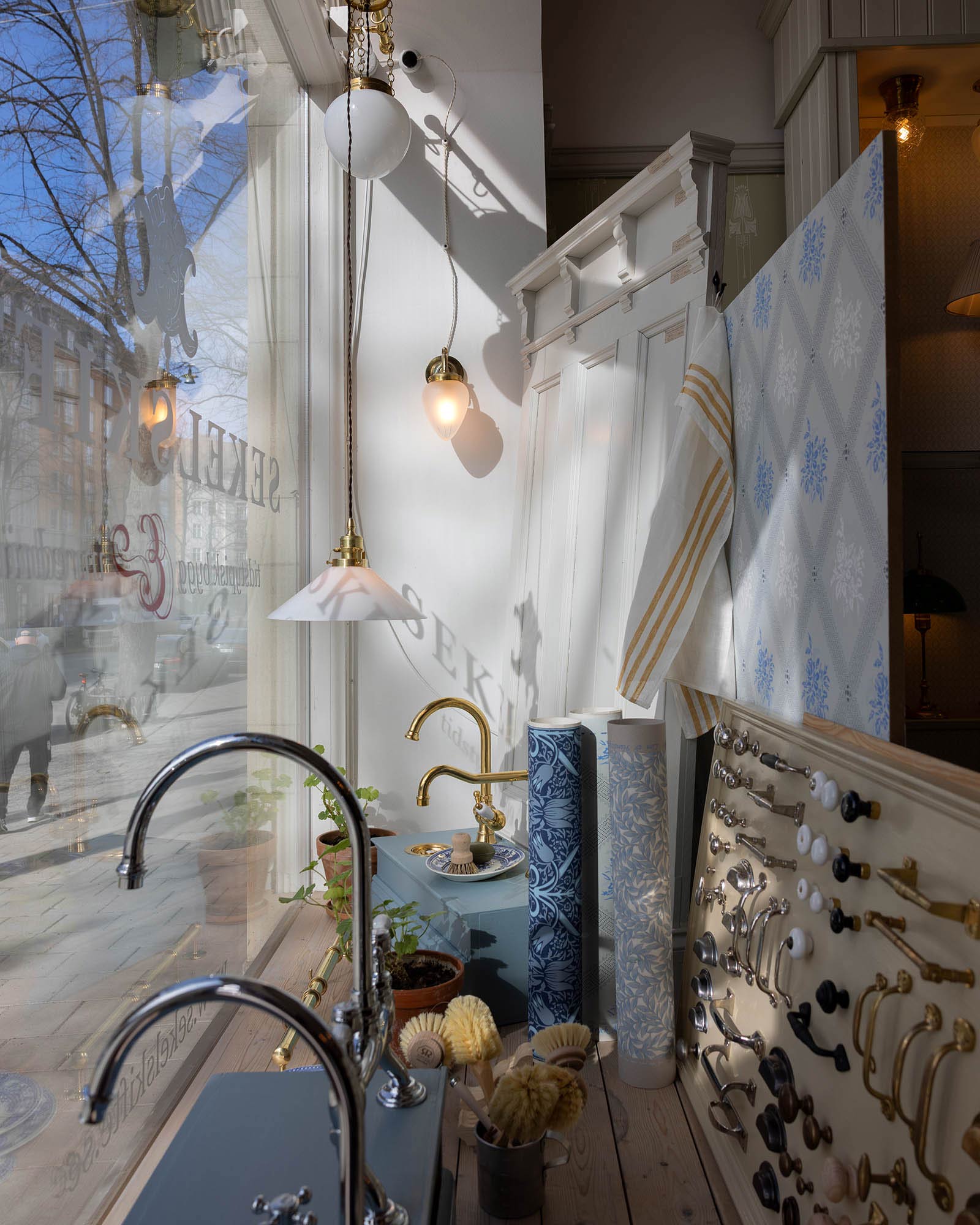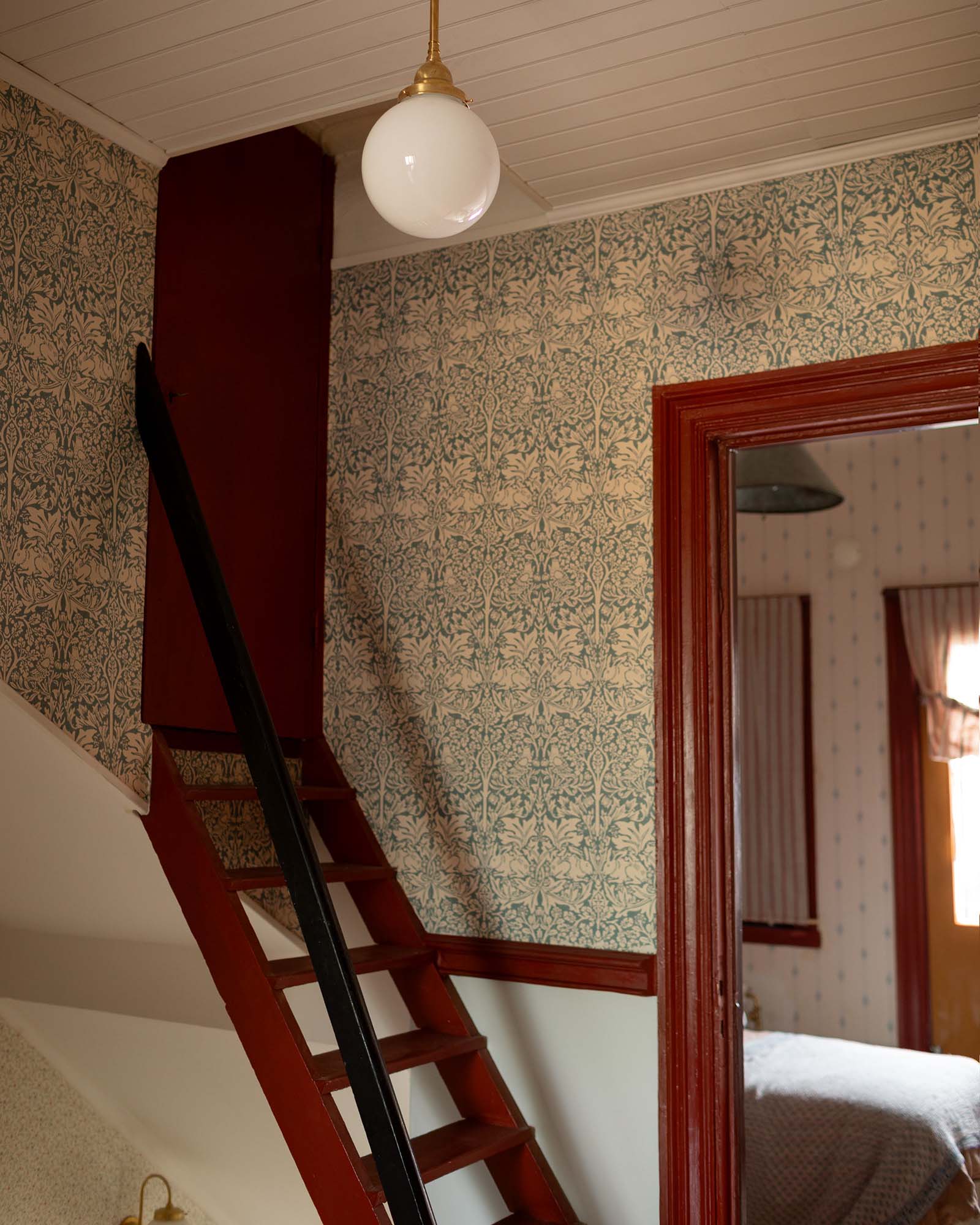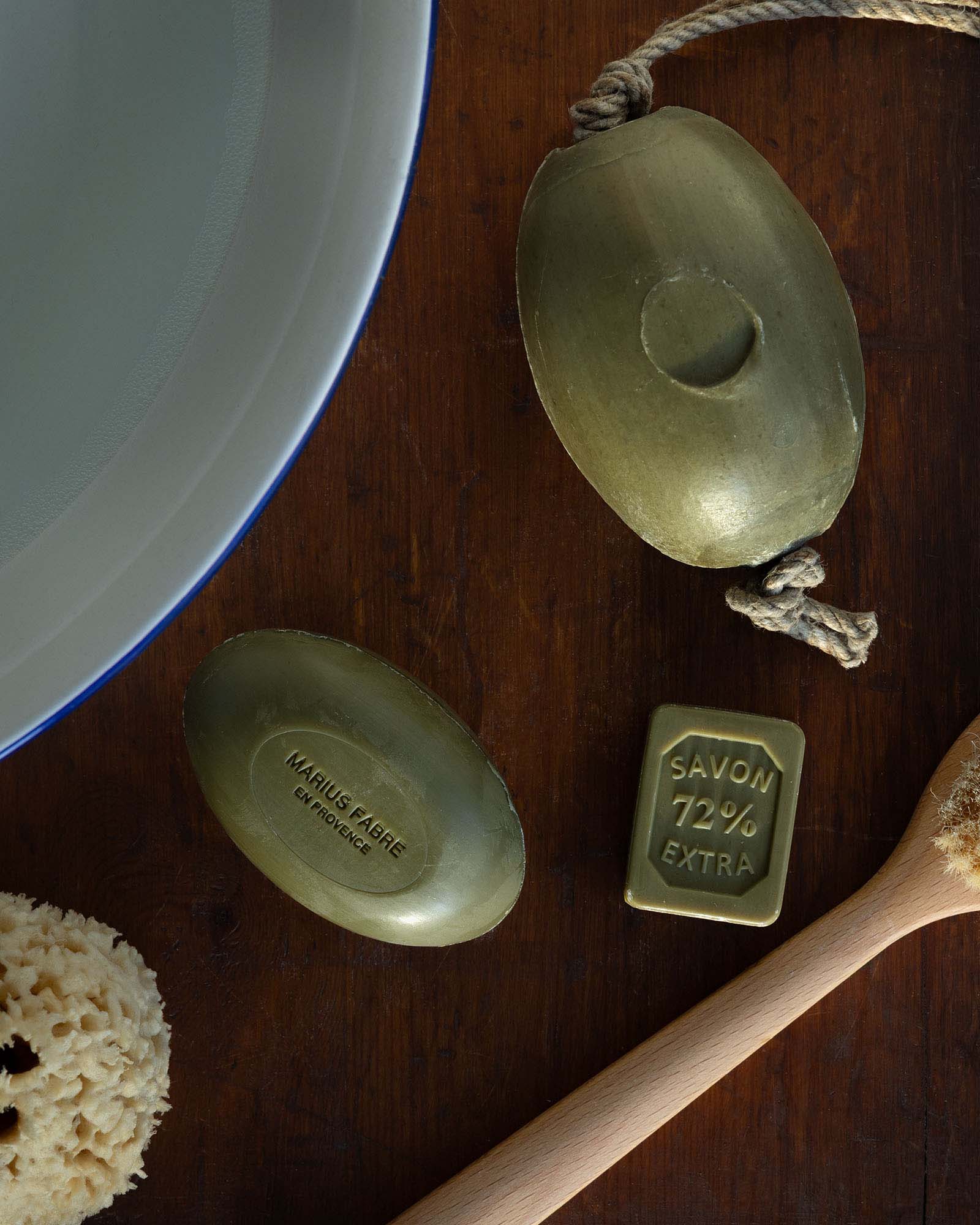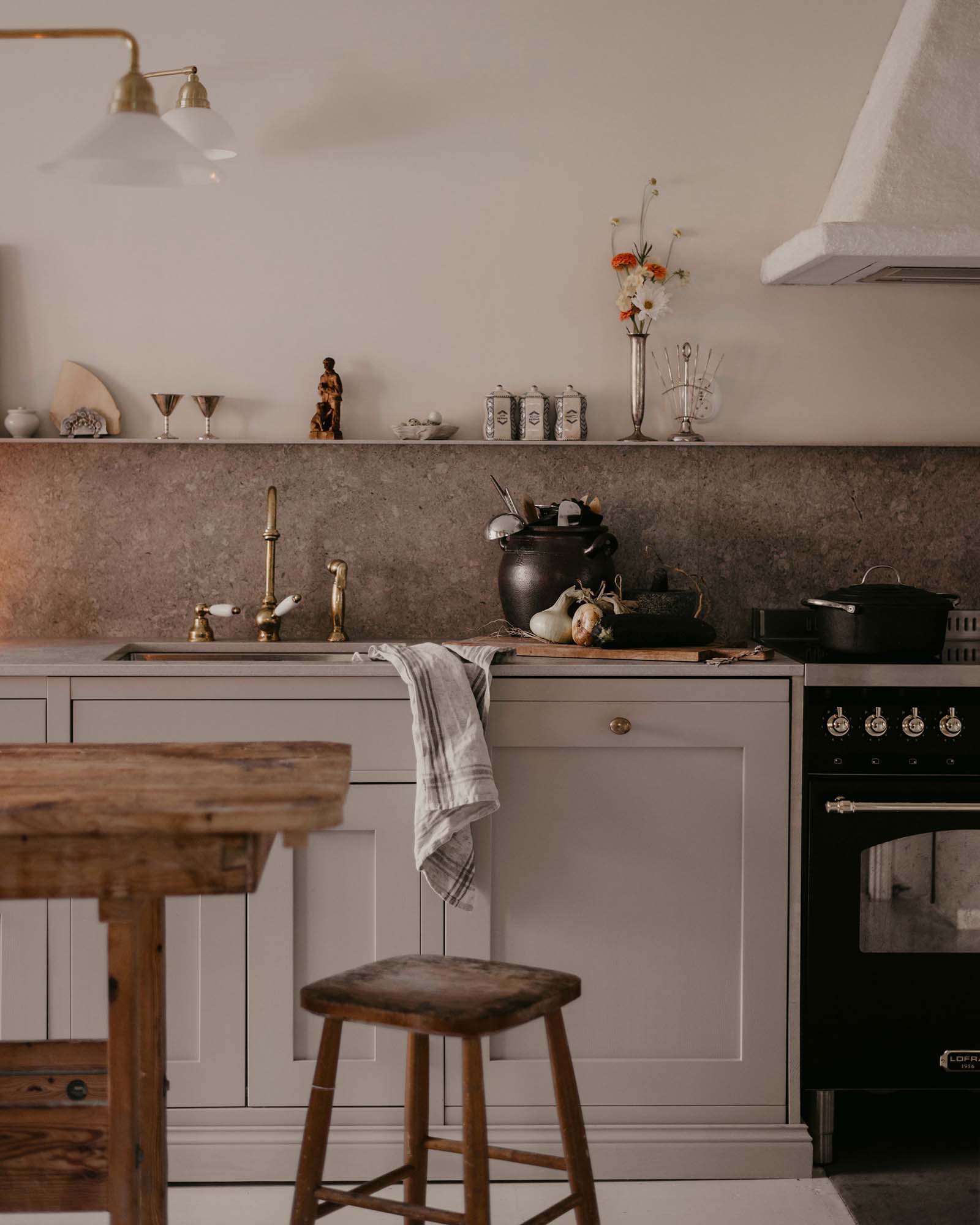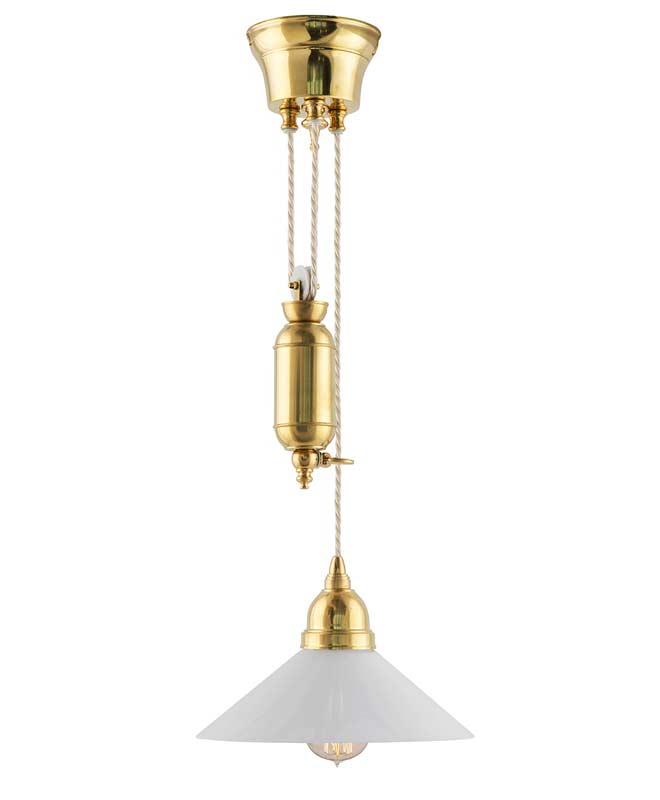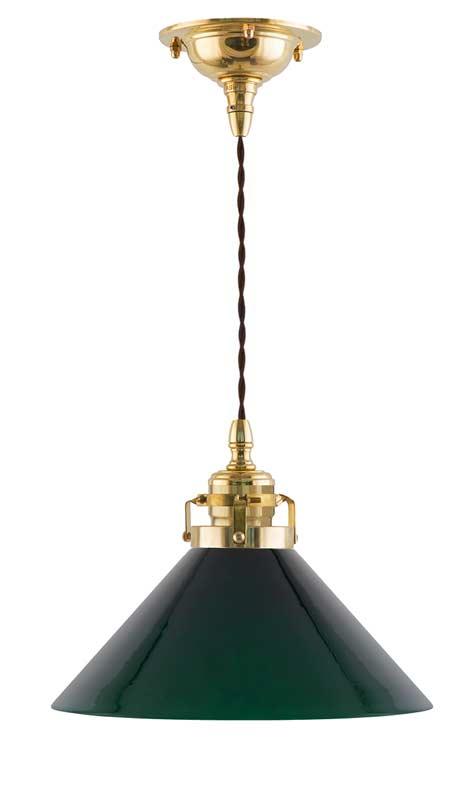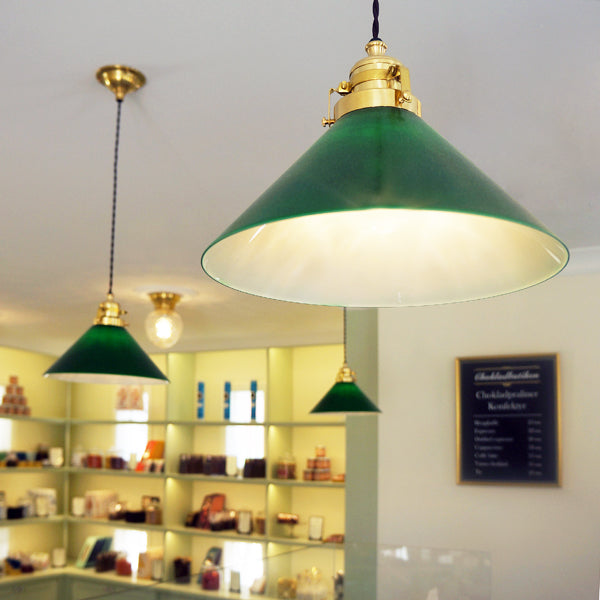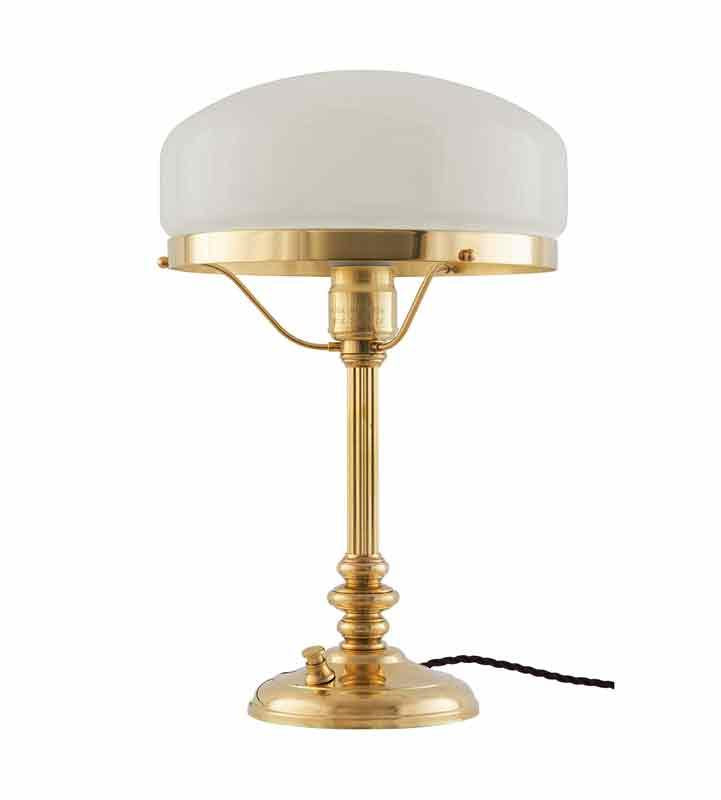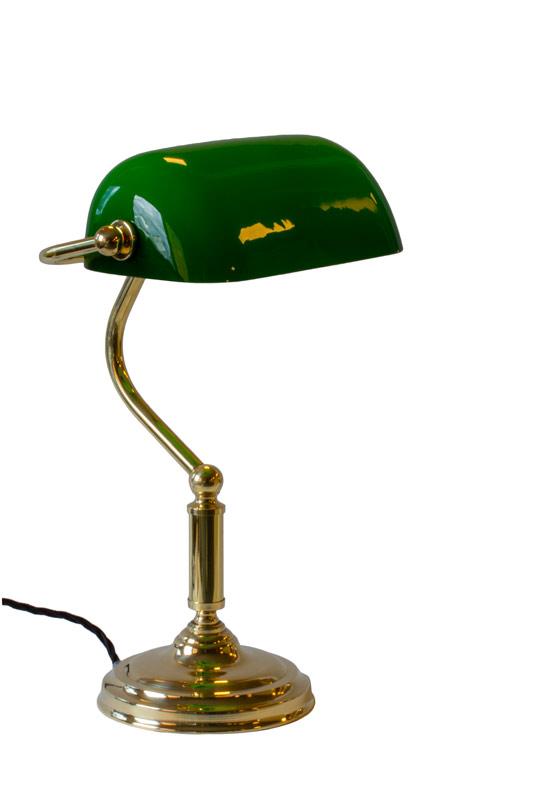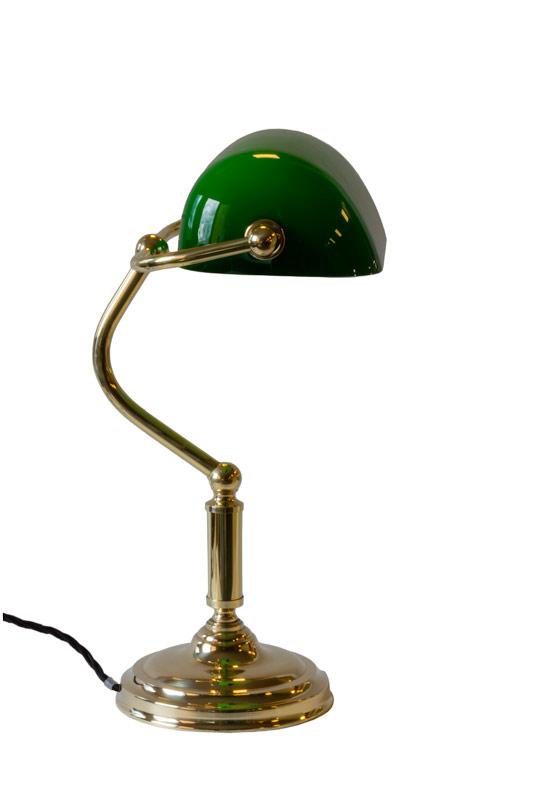At the turn of the last century, electric lighting was still a rarity. In the 1890s, the most common light sources in homes were oil lamps made of brass or glass. Gradually, electricity began to be installed in luxurious homes, but in many households, oil lamps coexisted with electric lighting for a long time. By the early 1920s, about 80% of households in Stockholm had electricity, but it took longer for smaller towns and rural areas to gain access to the same luxury.
Placement of Lamps
In homes from the early 20th century, fixed lighting was installed with visible electrical wiring in the form of twisted textile cables, which were attached to porcelain insulators on ceilings and walls. The most common type of lighting was ceiling lamps, especially in the dining room. The fixtures consisted of smaller glass shades on a brass base. The design of ceiling lamps varied depending on the room. In simpler spaces, a bare, hand-blown light bulb in a porcelain or brass holder was often used.
In the kitchen, the popular shoemaker lamp was often used, while the more elegant rooms kept the luxurious oil lamp, which was later modernized with electricity. Initially, electricity was mainly used for functional lighting, but over time, ambient lighting in the form of floor and table lamps also became popular.
Materials and Design
The first lamps were made of untreated brass and had hand-blown glass shades in various designs. In the 1910s, it became popular to antique the brass to give the lamps an older appearance. Before the introduction of tungsten filament light bulbs in the 1910s, clear glass was the most common choice for ceiling and wall lamps. The glass was often cut with patterns to diffuse the light and reduce glare. The most common pattern was a grid design, often with an engraved star at the bottom of the glass.
With the introduction of stronger tungsten filament bulbs, there was a need to diffuse light without glare. This was best achieved using shades made of opal white glass. Previously, opal white glass was only used in open shades where light needed to be directed, such as in shoemaker lamps.
Regarding surface finishes on lamps, nickel-plated brass became very popular in the 1920s, especially in neoclassical interiors. Even modernist designers of the 1930s and beyond found polished brass too ostentatious and preferred nickel-plated lamps instead. Historically, however, yellow metal, meaning untreated brass, was by far the most common surface finish, not least because it reflects light in a warmer and more homely way compared to cold white metal.
Light Sources Today
When lighting your home today, it is important to consider both function and ambiance. A good rule of thumb is to have around five light sources in each room: a ceiling lamp that spreads a lot of light and is functional, complemented by four smaller lamps that either create ambiance or serve a specific purpose, such as a reading lamp.
Do you want to recreate the feel of turn-of-the-century lighting in your home? We recommend choosing period-appropriate materials such as brass, porcelain, and hand-blown glass. We also suggest using LED bulbs in a classic design, as they are both energy-efficient and emit a warm, beautiful glow.




























































































